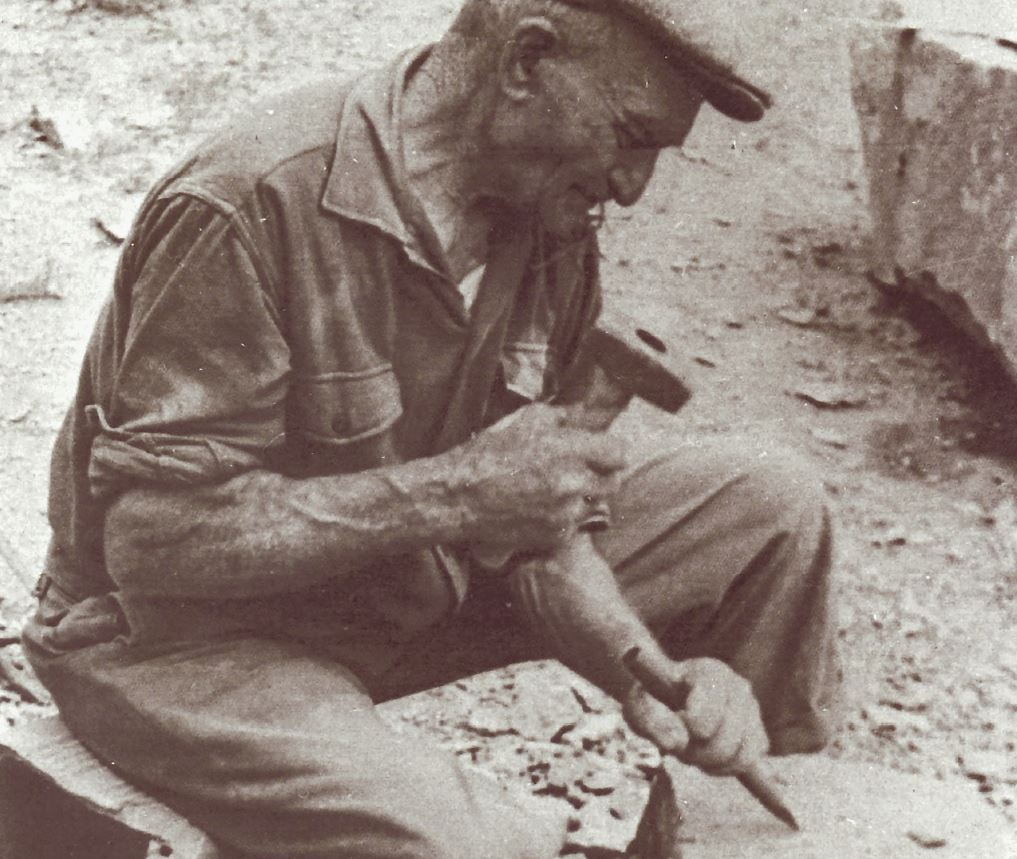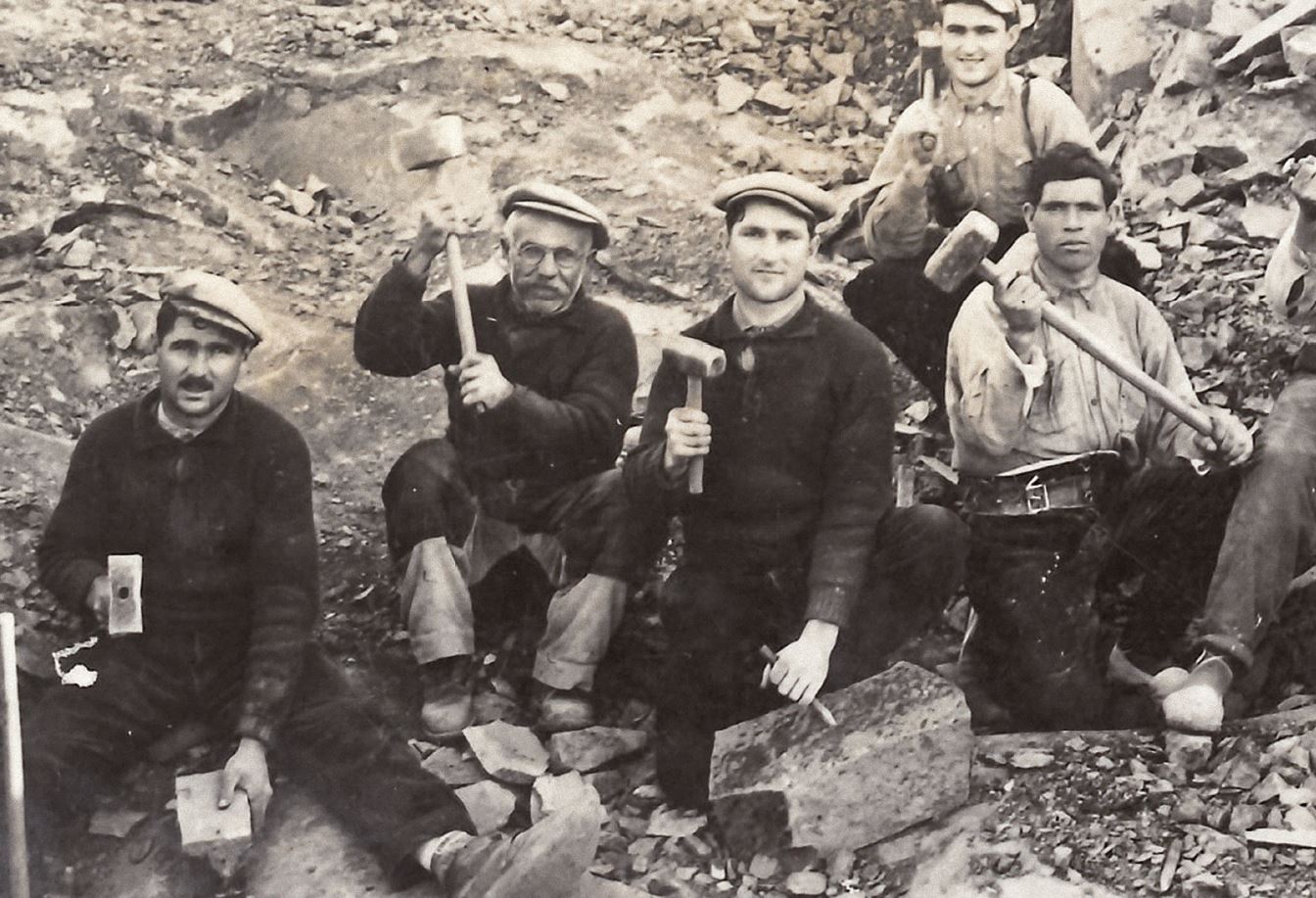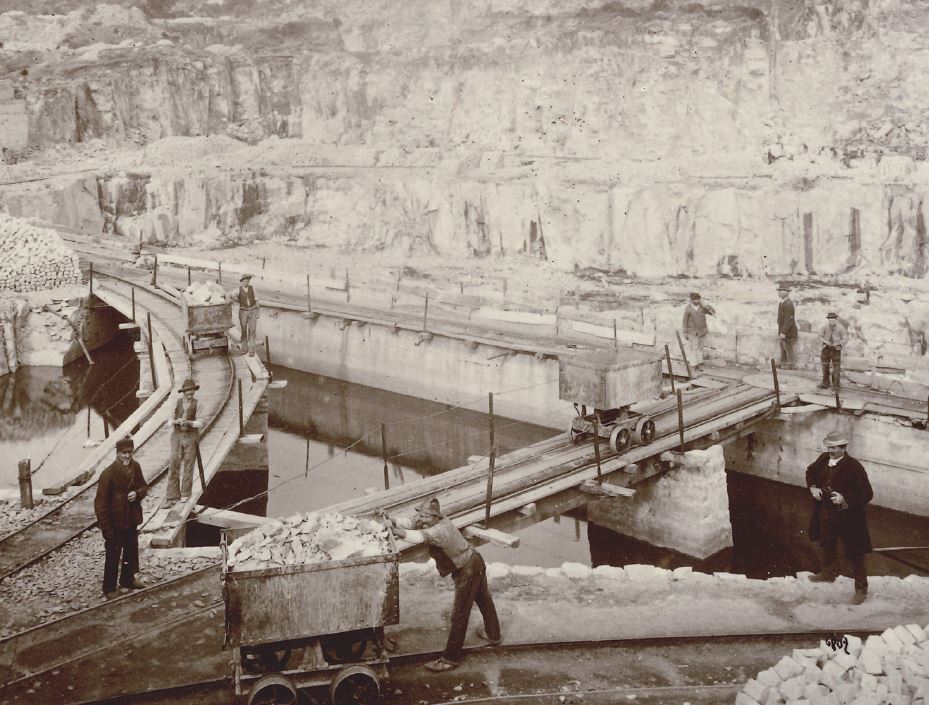THE FUNDAMENTAL ROLE OF QUARRYMAN
THE EXPLOITATION OF QUARRIES WOULD NOT BE POSSIBLE WITHOUT QUARRYMAN.
These men of all generations,
of different nationalities, mainly
Italians, have a very
painful because the porphyry is very hard,
as much as the resistance of the workers.
exercising their profession in all
atmospheric conditions, in the
noise, dust, risk of accident,
they work without protections,
without helmet, gloves or goggles.
The rates are infernal, the salary
minimum and social protection
almost non-existent. Yet they
are there every morning to start over
with colleagues, displaying
team spirit, solidarity
flawless. It is at this price that the company
prosper and survive.
THE WORK OF THE QUARRYMAN

THE WORK OF CARRIERS IS EXTREMELY DIFFICULT BECAUSE OF THE EXPOSURE OF
WEATHER WORKERS, MATERIALS HANDLING
VERY HEAVY ROUGH, USE OF TOOLS REQUIRING A LOT OF CAUTION.
It is therefore very physical and dangerous, requiring a good constitution
and a lot of courage.
But, in addition to these requirements, it is important to know the stone, to know
how it reacts to mine blasts, chisel impacts under the blows
of the masette of the cobblestone cutter.
And then, of course, you have to know how to find the “thread of the stone”.
All this is less physical but requires learning and cannot be acquired
only with a lot of patience.
Another condition is essential: love teamwork!
1ST OPERATION:
MINING AND SLAUGHTER
MINING
Mine holes are dug
with steel bevel iron bar
operated by shocks, by hand.
The holes are loaded with powder
compressed mine whose effect tends to
to split, to dislocate the rock.
high explosive compounds,
recently discovered, such as
fulmi cotton and dynamite, do not
not suitable for the extraction of
porphyry in the form of large blocks,
as regular as
possible. Later punchers
tires have replaced the bar
of iron.
THE SLAUGHTER
The explosion does not always detach
completely the block of mass
rocky; then you have to detach it
by means of small steel wedges
forced into slits produced by
the explosion of gases in the hole
mines or knocked into holes
dug with the quarry needle.
2ND OPERATION:
SLITTING
The felled blocks are distributed in
manageable pieces by means of
steel wedges forced into holes
tool-dug.
3RD OPERATION:
CUTTING
It consists of cutting the stone into small
size and shape blocks
approached as closely as possible
those that the slab or the
cobblestone finished; he therefore gives the floor
rough that is often cut to
clear the pavement on the spot
where it is used.
4TH OPERATION: SIZE
This last work consists in putting
the raw paving in shape and dimensions
determined. For the tiles,
for heavy cobblestones, the worker
uses the needle, struck with the
hammer or hand mallet.
For pavers 10 to 15 cm high,
15 in length and 25 in
width whose weight varies from 9 to 12
kilograms, the size is made with
the épinçoir which consists only
into a small hand mace
square ends with edges
sharp.
The cobblestone worker is everything
comfortably seated on the ground, legs
crossed, wielding with one hand
the tweezer and, on the other, the stone
shape.
CAREER DAY

IT'S A LONG DAY RHYTHMATED BY THE SOUND OF THE TRUMP (SIGNAL OF BEGINNING
AND END OF ACTIVITY).
It runs from 6:00 a.m. to 12:00 p.m.
with a break at 8:00 a.m. for breakfast
lunch.
At noon, the workers take their
meals at home or in canteens.
During the meal, we proceed to
necessary firecracker shots.
Then resumed at 1:30 p.m. until 5:30 p.m.
After the workers' day, we
carries out mine blasts.
From the beginning of May, the
quarry background turns
in a village of blue canvases. For
protect themselves from the scorching heat, the workers take shelter under a canvas and
wear a cap on their head with
fabric on the back.
Their water bottle is surrounded
with a damp cloth to keep
relative freshness.
Work is by the task or by price
made, except for the maneuvers which
are paid by the day. Payroll takes place
fortnightly.
In 1925, the fortnight represents
150 hours of work for a salary
of about 220 francs, which, reduced nowadays, represents approximately
174 euros.
CAREER PROFESSIONS
THE MINER PERFORATOR
drill the holes in the rock and
place the powder.
THE SLICER AND THE APPRENTICE
SLICER
cut the blocks with the big ones
needles and wedges. They need a
perfect knowledge of the "thread" of
the rock. For two or three years,
the employer charges them for the powder
and hours of miners. At the end
of the month, they owe money to the
Career Society. It ends up
lead to a strike that ends in the
removal of these abuses.
THE TAILOR
finishes the paving stones. THE
slicer and tailor work
still in squad. They carve in
average 90 cobblestones per day, 120
for the best.
THE RETAILER
recuts the broken cobblestones.
THE MARKER
draw a sign of different color
on the paving stones cut by each workman.
Everyone has his heap and it is rare
that an incident occurs concerning the
number of pavers.
THE PUMP ATTENDANT
starts the pumps to evacuate
the water that floods the quarry (the
bottom of the quarry is lower than the
sea level, moreover it receives the
runoff and springs).
The drain pipe passes under
the railway bridge and the water is
dumped at sea.
THE BLACKSMITH
remakes the needles at the quarry forge.
There are also blacksmiths
independent.
THE STABLE WORKER
takes care of the maintenance of the premises and
horses. In 1911 there are 10 horses:
Mutton, Moussi, Coquet, Chicken,
Jewel, Lamy, Butterfly, Favorite, Cadet.
THE WAGONIST
pushes the cart to the place of
loading. He fills it with shards of
porphyry to feed the crushing.
THE PAVING SPLITTER
cuts pavers and curbs
sidewalk from the rock he broke.
He then works the pavement to
bring it to the desired dimensions,
with his tools (mallet, hammer
short and long, split at an angle by the
2 ends - nipper).
THE GREASER
is responsible for the proper functioning
pulleys.
THE DRUG

THE TRAIL WAS CONSISTED OF:
OF A RAILWAY of small section. It was one of the activities
more important in operation. Indeed the material extracted from the earth
is extremely dense and very difficult to move whether raw, finished or under
form of waste.
The workstations were often far from each other, it was the
most effective way to ensure the smooth running of the operation.
METAL CARS with a capacity of 0.80 m3.
When it was founded, the company had 29 iron wagons and 8 wooden ones. THE
quarrymen erected and dismantled the rails according to the development of
works.
On the horizontal parts they were pushed or pulled manually. At
In the beginning, there were even horses to perform these tasks.
In the inclined planes the wagons were towed by a cable which worked
continuous, it was 4,000 m long for a circuit of rails of
2,100m.
The winches which actuated this mechanism worked by steam until
1934 before the electrification of the operation.
The carrier assigned to the trail had to be robust because the exercise was very
physical.







